Menus

Jahn
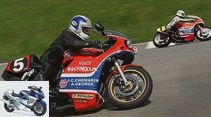
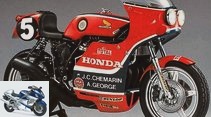
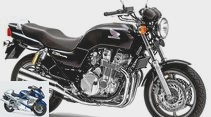
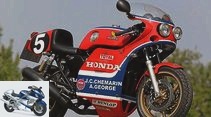
13 photos
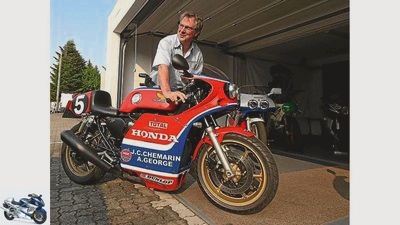
Jahn
1/13
Owner Peter Wolf can rightly be happy about his cream piece.
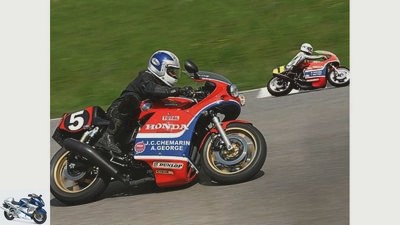
Jahn
2/13
Two generations of Honda: Honda CB 750 Cafe Racer and Honda RCB 1000.
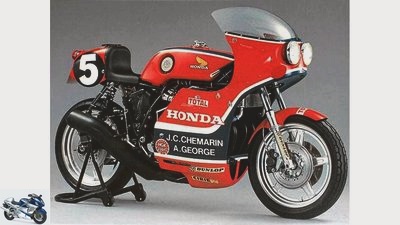
Jahn
3/13
The original: The winning machine of the Bol d‘Or from 1976 is in Motegi in the Honda Museum.
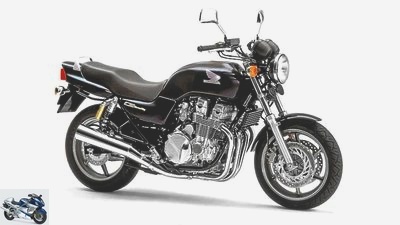
Jahn
4/13
Organ donor: The Honda CB Seven Fifty served as the starting point for the conversion to the Cafe Racer.
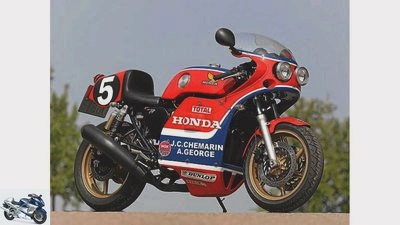
Jahn
5/13
The replica: The Honda CB 750 Cafe Racer looks pretty close to the original.
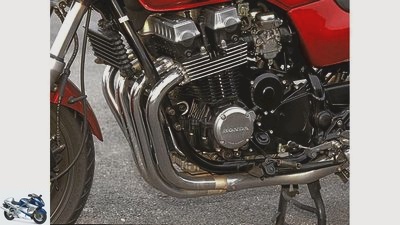
Jahn
6/13
The engine of the Seven Fifty shows a technical similarity to the RCB engine.
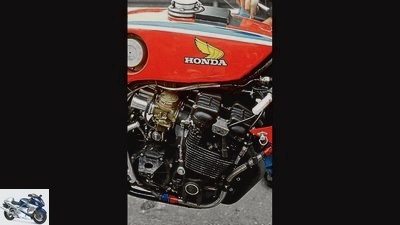
Jahn
7/13
Honda built the RCB engine especially for the long-distance racing machines.
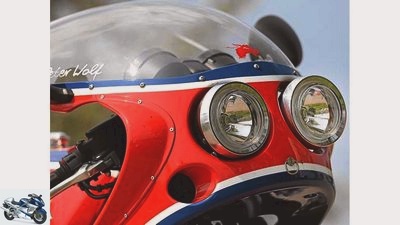
Jahn
8/13
The cladding with the two typical headlights is made of carbon fiber.
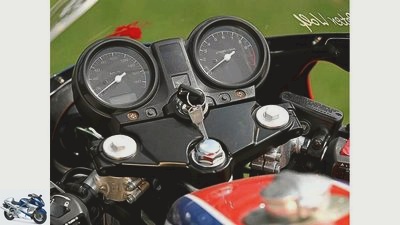
Jahn
9/13
The instruments come from the Honda CB Seven Fifty, the handlebar halves are custom-made.
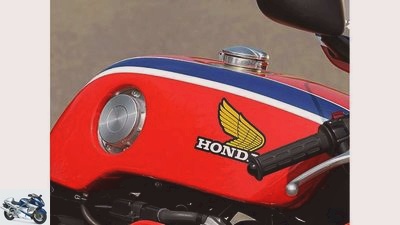
Jahn
10/13
The aluminum tank has the typical quick release fastener and the dummy for the quick tank system.
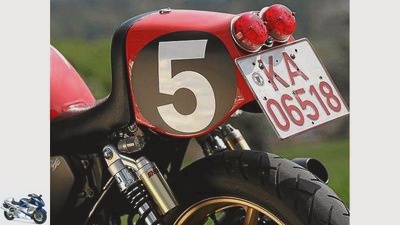
Jahn
11/13
The two taillights stretch up to the sky like the original. The starting number 5 also graced the winning machine from the 1976 Bol-d’Or.
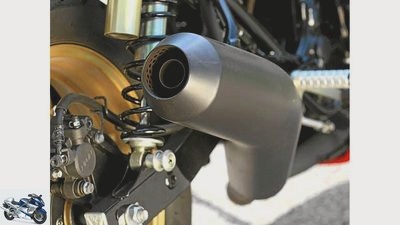
Jahn
12/13
The silencer of the four-in-one system meanders beneath the engine, curving as it once was.
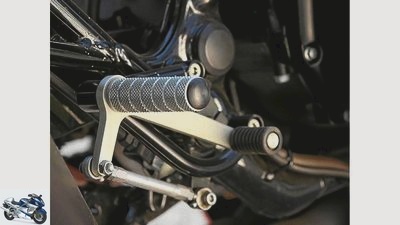
Jahn
13/13
Lovingly knurled footrest, the additional lever deflection has a slightly negative effect on the gearshift.
On the move: Honda CB 750 Cafe Racer
A grandson of the Honda RCB 1000 – Honda CB 750 Cafe Racer
Content of
A Japanese customizer is offering an everyday retro bike that is similar to the 1976 long-distance champion, the Honda RCB.
GBig excursion with big consequences: Which motorcycle fan doesn’t even want the land of Honda & Travel co? After all, there are numerous beautiful machines from the Far East that are already in demand today. Motegi in the middle of Japan was a travel destination for the MV Agusta Club some time ago, with a visit to the Motorcycle Grand Prix and the world-famous Honda Museum. Also on board: Peter Wolf and son Stefan. Great admirers of Honda racing history and happy because they were enthusiastic about the numerous Honda Grand Prix machines and also the long-distance racing bikes, such as the legendary RCB 1000. This won the 1976 Bol d’Or in Le Mans, France and won all five rounds of the European Endurance Championship.
When leaving the museum, the key experience: Peter and Stefan Wolf couldn’t believe their eyes: an RCB 1000 stood on an exhibition stand on the racetrack grounds! To buy! The cladding with the two flat headlights, the elongated, flat tank with quick release and quick tank facility, the compact seat hump with the two round rear lights and the four-in-one exhaust system with the curved silencer, everything corresponded to the original.
Only at second glance did certain differences become apparent. Cast wheels instead of the riveted Comstar wheels, cockpit with speedometer and tachometer probably from a production motorcycle, and the fork, brakes and shock absorbers were obviously mass-produced products. A look behind the disguise revealed the origin to their connoisseur’s eyes. The inline four-cylinder of the Honda CB Seven Fifty, with two overhead camshafts and four valves per cylinder, served as the drive and the chassis was quickly identified as a Honda high-volume part.
Other amazing accessories such as rear-view mirrors, turn signals and license plate lighting indicated the possibility of moving the exhibit on public roads. The solution to the riddle: A customizing company in Tokyo, Whitehouse Japan, offers the Honda CB 750 Cafe Racer, the official name, based on the Honda CB Seven Fifty as a complete package. No question about it, such a machine had to be taken home, that would be the show at the motorcycle meeting.
Honda RCB 1000
Jahn
The original: The 1976 Bol d‘Or winning machine is in Motegi in the Honda Museum.
Flashback: In the RCB long-distance racers of 1976, a four-cylinder was used, the substructure of which, according to the regulations, had to be derived from the series. A displacement of 1000 cm³ and the free choice of cylinder and head were permitted. Only the heavily modified substructure of the CB 750 came into question as a basis. The original crankshaft, also modified, had a stroke of 63 millimeters, which originally resulted in a displacement of 915 cm³ with a 68 millimeter bore. A revised crankshaft with a 64.8 millimeter stroke raised the working volume to 941 cm³ during the season, and finally 70 millimeters bore provided 997 cm³. Honda even switched the primary drive from two thin series chains to inverted tooth chains. A completely new four-valve cylinder head was enthroned on the new cylinder, the masterpiece of the RCB 1000, so to speak. A special dry clutch transmitted the significantly increased torque, a racing magnet above the gearbox provided the ignition sparks and a special dry sump lubrication system for an optimized oil circuit. Four Keihin 34 constant pressure carburettors and the four-in-one exhaust system completed the engine peripherals. A double loop frame with stiffer Showa telescopic fork, a new swing arm and struts with an astonishing amount of suspension travel and wide Comstar rims completed the package.
It was so well put together that Honda won all five European championship races, including the prestigious Bol d’Or in Le Mans, in front of an audience of more than 100,000 spectators. At first around 115 hp, later in the course of the season, more than 120 hp at 9000 rpm was enough to keep the international competition in check.
The secret of the success was not in extreme top performance or low weight, but quite obviously in the driveability and the rounding off of the overall package.
Jahn
Honda built the RCB engine especially for the long-distance racing machines.
One of the two drivers, Alex George, described this experience as "great experience". The Grand Prix driver owes his participation in the Bol‘Or to a coincidence. After regular driver Christian Leon broke his collarbone in a fall, George was deployed. The race was a great challenge for him: "In a Grand Prix you put 100 percent power over an hour, but in a long-distance race you have to drive consistently fast, safely and strong for 24 hours. Honda as a team was terrific. Everything imaginable was done for the drivers. After each change after 42 rounds, the doctor examined me, gave me a massage, was given something to eat and was able to rest. But that was only one aspect. The other was the organization that was polished down to the last detail. The machines, mechanics, team managers – everything went like clockwork, there was no breakdown. We didn’t have the slightest problem either, the Honda ran perfectly. I am convinced that she would have lasted for another 24 hours afterwards."
Christian Bourgeois, who was allowed to test the Honda France factory RCB for MOTORRAD magazine (issue 23/1976), also underpinned this impression: "Due to the small distance between the handlebars and the hump, the sitting position is very relaxed. After pushing, the sound is very muffled for a racing motorcycle and the mechanical noises are so subtle that the RCB could almost have been moved on the road." After the first few meters, the tester is amazed at the elasticity of the large four-cylinder. "You can rev up from the lowest speeds without an acceleration hole. The motorcycle drives itself as if by itself. The trump card of the engine is its elasticity. Thanks to the ample torque curve, the range of usable power is 5000 rpm. The high elasticity means that you cannot physically feel the performance. The large four-cylinder with its high compression has a high braking effect, which requires some getting used to. Despite its dimensions, the Honda can be handled with astonishing ease. She feels just as comfortable in slow meandering sections as in long curves. Despite the short wheelbase, it shows remarkable course stability."
Bourgeois goes on raving: "I have never ridden a motorcycle that not only has such good road holding, but also an equally clean overall behavior. It is possible to accelerate very early on exiting the curve. The steering takes some getting used to in tight corners. The motorcycle has a tendency to lean on."
The effect of the braking system with three 280 discs was enormous. The front brake deserved nothing but praise, the rear brake required a lot of attention. It grabbed brutally and quickly tended to block. Otherwise, the tester is full of praise for the RCB and draws an all-round positive conclusion: "With the RCB, Honda was able to achieve a considerable lead in the endurance tests. It is clear that out of five races you don’t win every one by chance. The Hondas had that certain something that made the difference." Racing history, a long time ago.




13 photos
Pictures: On the move: Honda CB 750 Cafe Racer
To home page

Jahn
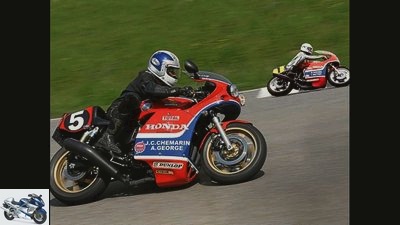
Jahn

Jahn
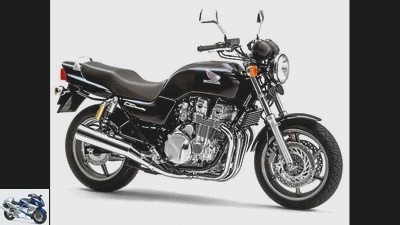
Jahn
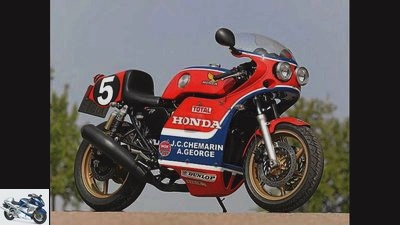
Jahn
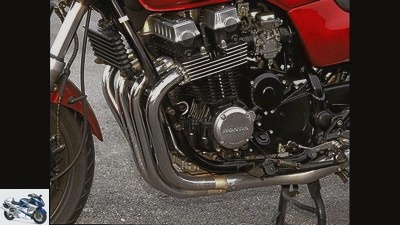
Jahn
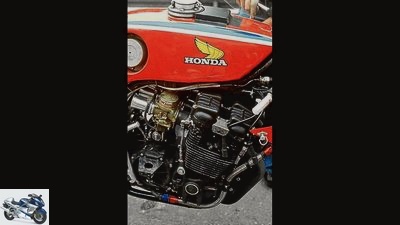
Jahn
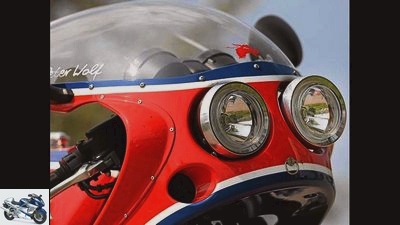
Jahn
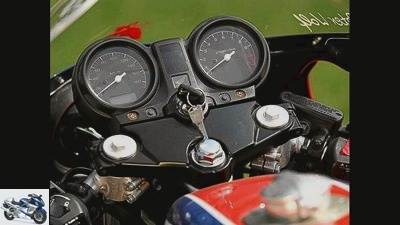
Jahn
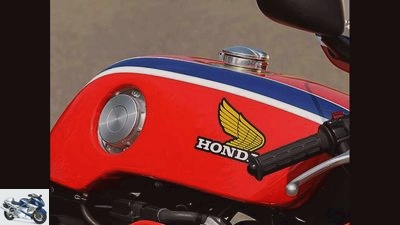
Jahn
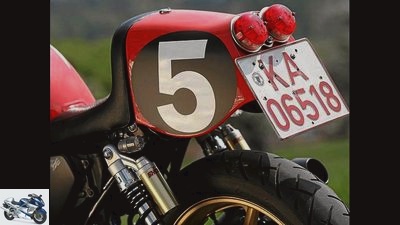
Jahn
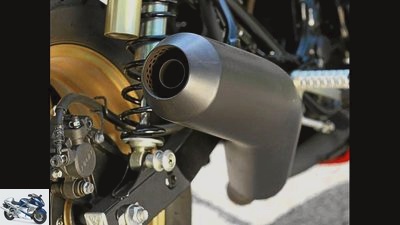
Jahn
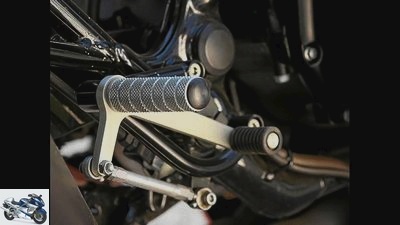
Jahn
Honda CB 750 Cafe Racer
Back to the here and now: Today we marvel at the Honda CB 750 Cafe Racer with the silhouette of the RCB, which with its striking appearance evokes lively memories of the great days of endurance racing. The RCB stands in front of us for everyone, so to speak. Peter Wolf never let go of the RCB from the first moment. After every break from racing, he was drawn back to the exhibit. Owning a motorcycle like this was a must. A Japanese member from the MV Agusta Club made the connection to Whitehouse Japan in Tokyo and served as an interpreter. There was a ready-to-drive motorcycle in the showroom and an agreement was reached. With a few small changes, this machine should come to Germany. But it was not until autumn 2010 when a box landed with the Wolf family in Weingarten. But first it was necessary to inform the customs officials. The box was only allowed to be opened under their strict eyes. After paying ten percent import duty and 19 percent VAT, the Wolf family was finally able to receive the Honda. Since then it has stood out in Wolf‘’s fleet, which shines with numerous collectibles such as a VFR 400 or an RC 30, with its unusual shape and color. And inspires just as much respect as the original.
Stretched long over the flat tank, the rider sits 25 millimeters lower in the motorcycle than on the CB 750. The handlebars are historically correct and deeply clamped and the sitting posture is classic but dynamic. The position of the tightly angled legs goes well with it, that is, that typical 70s racing feeling. The start, on the other hand, is very easy, like a modern motorcycle. Press the button, a short choke phase, and the four-cylinder whispers round and surprisingly discreetly. Even when driving he is surprisingly cultivated, almost inconspicuous. Only at speeds above 5000 rpm does the four-in-one system then escape an aggressively hissing pitch. With her, he also clearly increases in pace. The pilot shouldn’t expect any miracles in terms of extreme dynamics. With 73 hp at 8500 rpm, the CB 750 has a rather moderate engine compared to today’s athletes. But the performance is of course enough for the country road. And if you still have special requests, Whitehouse can serve you with tuning measures. Keihin FCR carburettors and other special parts increase the output by around 20 hp. It is thus about as potent as the Honda CBX 750 F with the same engine, which in 1984 already made 91 hp. Even with that, the Cafe Racer would not come close to the power of the real RCB 1000. There is still enough feeling. Hunched over the aluminum tank on the autobahn and crouched behind the pane of the carbon fiber cladding, you’ll soon feel like Jean-Claude Chemarin or Alex George. Due to the additional deflection, the circuit does not work quite as smoothly and with longer distances than with the CB Seven Fifty. The chassis plays with the range of services in all situations. Amazingly, the Cafe Racer feels completely different from the production Honda. While this comes up with good maneuverability, the Racer shows pure straight-line stability and wants to be forced into curves with significantly more effort.
Jahn
The replica: The Honda CB 750 Cafe Racer looks pretty close to the original.
Despite the same chassis geometry and 20 kilograms less weight compared to the Seven Fifty, both motorcycles are worlds apart due to the radically changed seating position. Relatively tightly tuned, the Honda RCB replica loves fast corners, even with bumps if necessary, and always and everywhere stubbornly pulls its course. On the other hand, tight corners require dedicated effort. And the poisonous brakes also support a brisk pace. Sufficient driving fun is guaranteed, with the Cafe Racer the Bol d’Or is practically on the doorstep every day. But not just the driving pleasure, but also enjoying the flowing lines offers an aesthetic delight every time. Let your gaze slide over the dynamic silhouette with the authentic paintwork transports the viewer back to the world of the endurance races of 1976.
But only a few enthusiasts in Europe will indulge in this experience, less because of the cost price of around 15,000 euros, but rather because of the complex import procedure. Peter Wolf can certainly imagine demonstrating the Honda to the TÜV, because all functions meet the Japanese approval requirements. Some of these are set higher than in Germany, and after all, the CB Seven Fifty cleared the legal hurdles of the TÜV almost 20 years ago.
They wouldn‘t be a problem even for Honda. Imagine this concept based on a CB 1300 F. This would not only enable a comparable engine to that of the original racer, but also a fantastic look. But the Wolf family can do theirs "RCB" Moving around in a relaxed manner in normal everyday life and feeling like at the Bol d’Or in Le Mans, without having to fear the competition constantly on the back of your neck like Jean-Claude Chemarin or Alex George once did.




13 photos
Pictures: On the move: Honda CB 750 Cafe Racer
To home page

Jahn

Jahn

Jahn

Jahn

Jahn

Jahn

Jahn

Jahn

Jahn

Jahn

Jahn

Jahn

Jahn
Related articles
-
Comparison test Aprilia SL 1000 Falco, Ducati ST 4S, Honda VTR 1000 F, Voxan Cafe Racer
Gargolov comparison test Aprilia SL 1000 Falco, Ducati ST 4S, Honda VTR 1000 F, Voxan Cafe Racer Sympathy-hunter Dull, but subtle thunder, …
-
On the move with the Honda GL 1000 Gold Wing
Jahn 11 pictures Jahn 1/11 In view of the enlightening driving impressions with the Honda Gold Wing from 1977, many old prejudices have to be straightened out ….
-
Artist On the move: Honda VFR 750 R The top of Mount Olympus Content of The Honda VFR 750 R has earned a special nimbus and a place high on the honor…
-
On the move: BMW R 27, Honda CB 72
Artist On the move: BMW R 27, Honda CB 72 Class meeting Content of Almost everyone has already experienced one thing: a big anniversary. Two who made…
-
Driving report Voxan Cafe Racer
Driving report Voxan Cafe Racer coffee machine Unadulterated two-cylinder aroma for pulse-accelerating enjoyment: The Cafe Racer from Voxan does its…
-
On the move: Honda VF 1000 R, Kawasaki GP Z 900 R, Suzuki GSX-R 1100
Jahn On the move: Honda VF 1000 R, Kawasaki GP Z 900 R, Suzuki GSX-R 1100 Technical revolution Content of They drove us crazy – and saved us money:…
-
On the move: BMW R 100 S, Honda CB 900 F Bol d’Or, Moto Guzzi Le Mans I.
fact On the move: big bikes from the 70s BMW R 100 S, Honda CB 900 F Bol d’Or, Moto Guzzi Le Mans I. Content of At the turn of the decade, MOTORRAD…
-
fact 17 pictures fact 1/17 Honda CR 450 Classic Racer. fact 2/17 Honda CR 450 Classic Racer. fact 3/17 Less for the racetrack, more for the eye: As …
-
Gargolov 9 pictures Gargolov 1/9 Louis press officer and motorcycle fanatic Kay Blanke, mastermind behind the NX project. Gargolov 2/9 A cheeky cafe …
-
Gargolov Top-Test Voxan Cafe Racer What you want The booming V-Twin as a splendid eye-catcher between the wheels, curves and shapes in the purest …